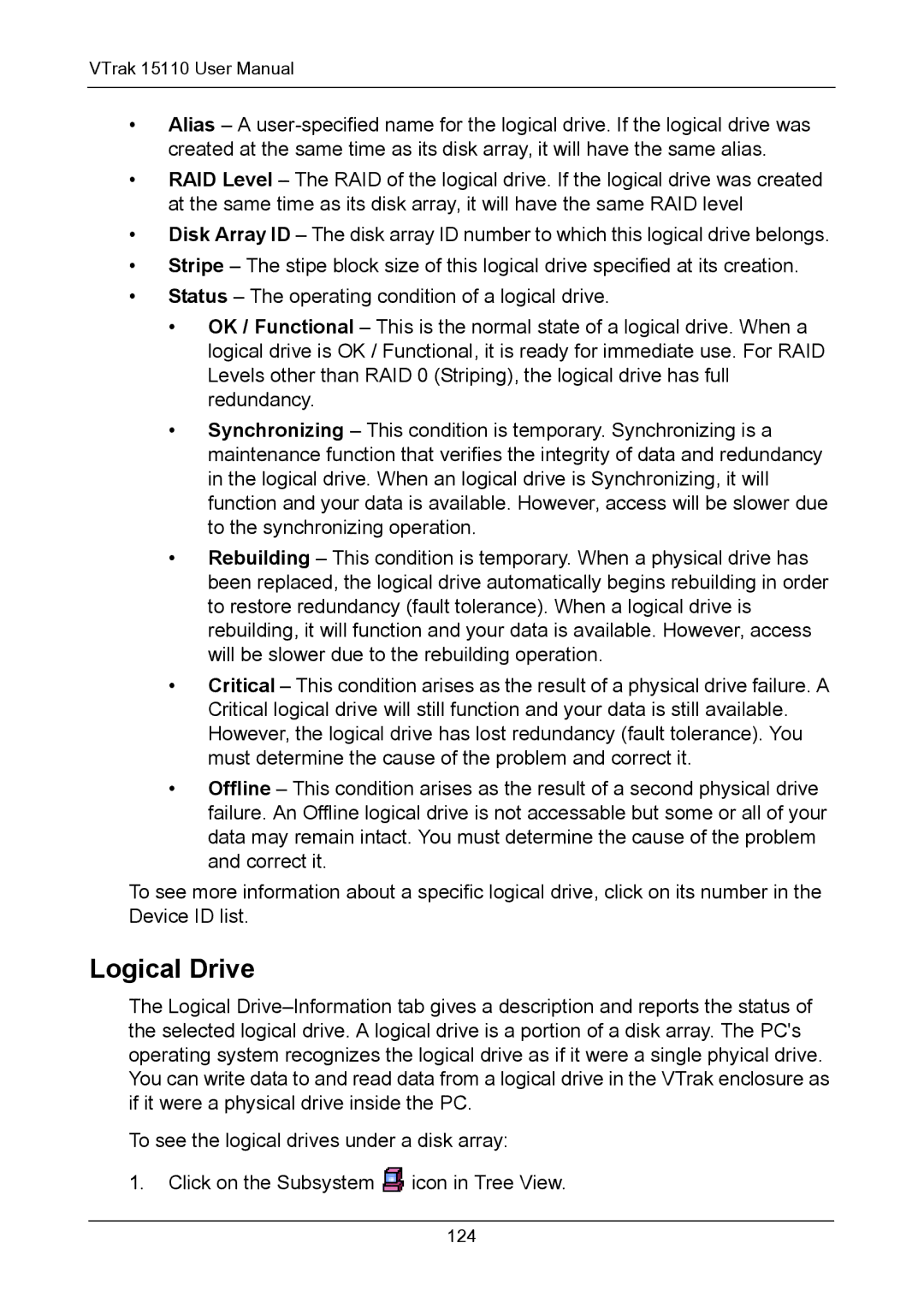
VTrak 15110 User Manual
•Alias – A
•RAID Level – The RAID of the logical drive. If the logical drive was created at the same time as its disk array, it will have the same RAID level
•Disk Array ID – The disk array ID number to which this logical drive belongs.
•Stripe – The stipe block size of this logical drive specified at its creation.
•Status – The operating condition of a logical drive.
•OK / Functional – This is the normal state of a logical drive. When a logical drive is OK / Functional, it is ready for immediate use. For RAID Levels other than RAID 0 (Striping), the logical drive has full redundancy.
•Synchronizing – This condition is temporary. Synchronizing is a maintenance function that verifies the integrity of data and redundancy in the logical drive. When an logical drive is Synchronizing, it will function and your data is available. However, access will be slower due to the synchronizing operation.
•Rebuilding – This condition is temporary. When a physical drive has been replaced, the logical drive automatically begins rebuilding in order to restore redundancy (fault tolerance). When a logical drive is rebuilding, it will function and your data is available. However, access will be slower due to the rebuilding operation.
•Critical – This condition arises as the result of a physical drive failure. A Critical logical drive will still function and your data is still available. However, the logical drive has lost redundancy (fault tolerance). You must determine the cause of the problem and correct it.
•Offline – This condition arises as the result of a second physical drive failure. An Offline logical drive is not accessable but some or all of your data may remain intact. You must determine the cause of the problem and correct it.
To see more information about a specific logical drive, click on its number in the Device ID list.
Logical Drive
The Logical
To see the logical drives under a disk array:
1.Click on the Subsystem ![]() icon in Tree View.
icon in Tree View.
124
